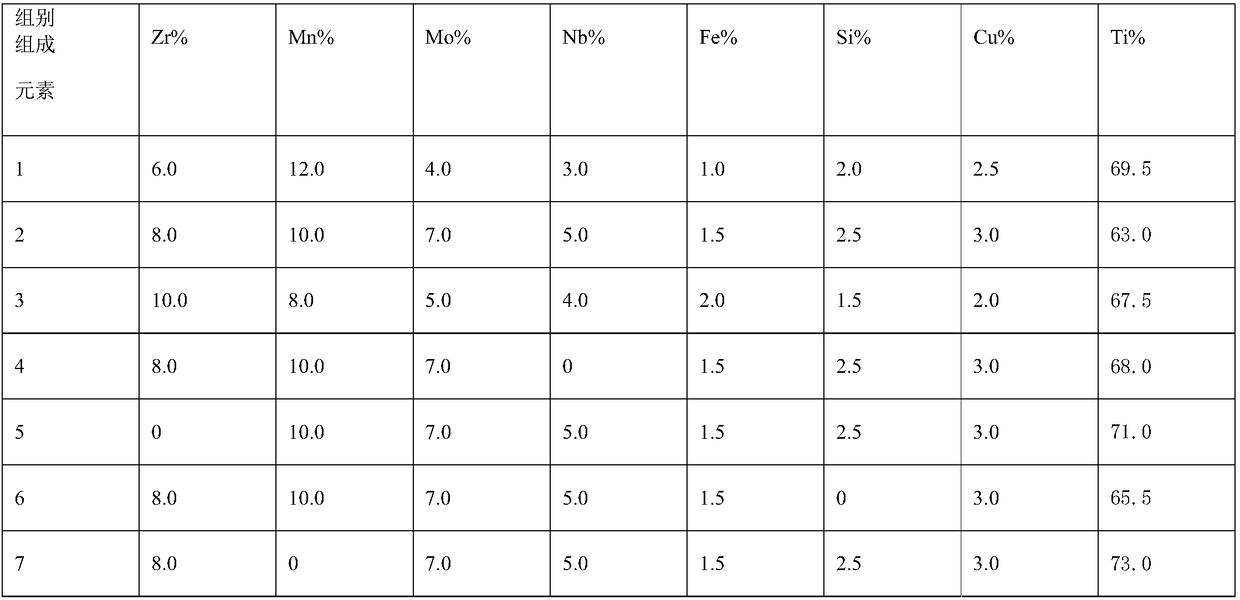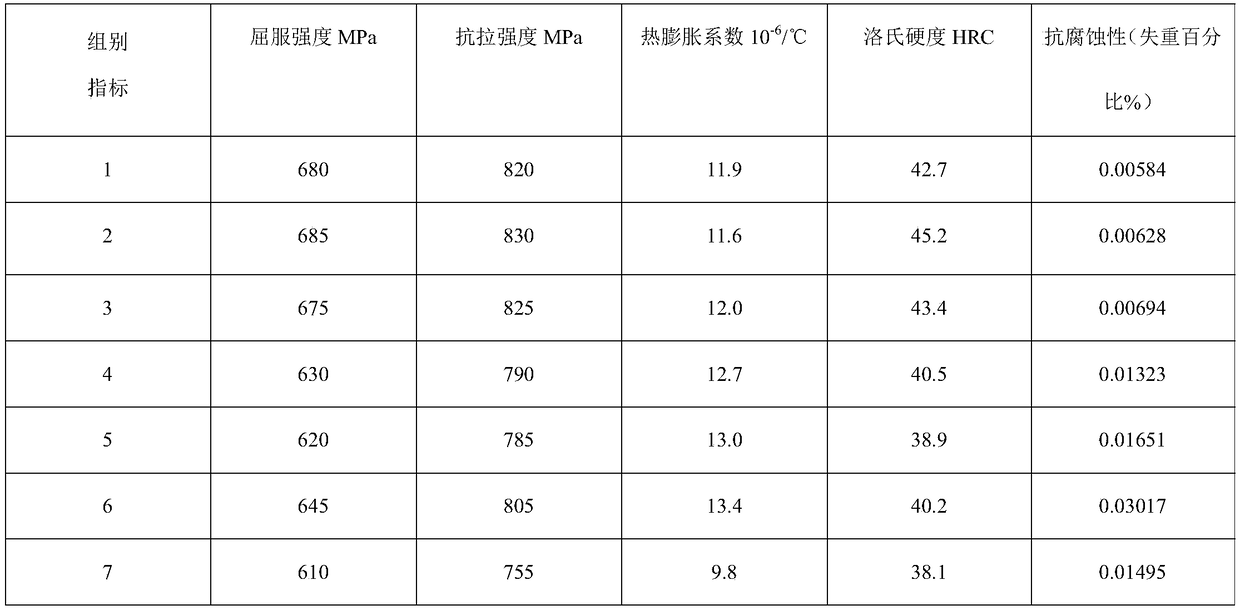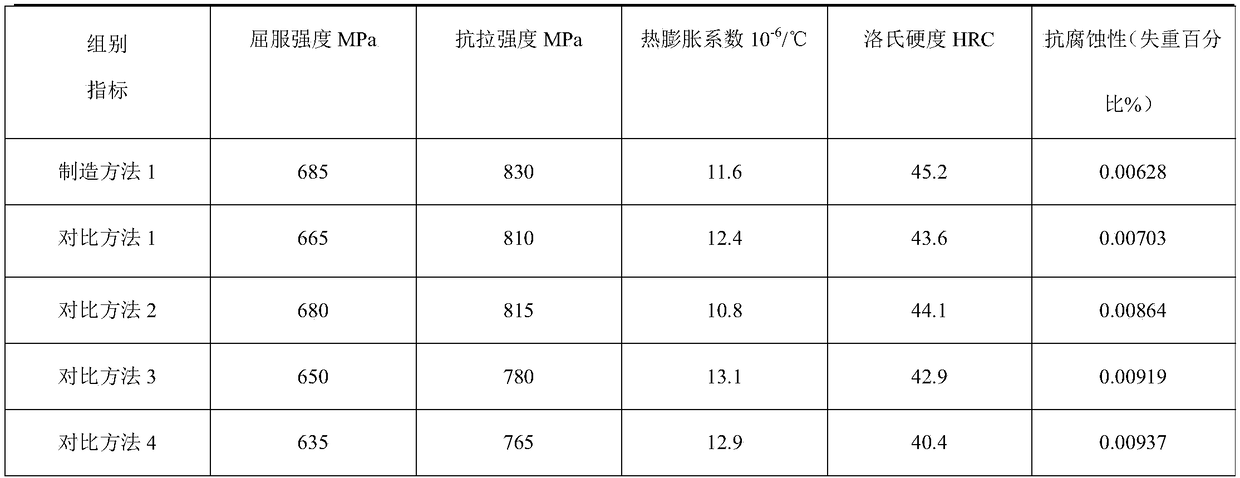Nanometer porcelain denture and a manufacturing method thereof
A manufacturing method and nanotechnology, applied in the medical and health field, can solve the problems of low element stability, complex processing technology, low bonding strength, etc., and achieve improved dispersion strengthening and toughening effects, high yield strength, and high tensile strength. Effect
- Summary
- Abstract
- Description
- Claims
- Application Information
AI Technical Summary
Problems solved by technology
Method used
Image
Examples
Embodiment 1
[0035] Fabrication of Metal Substrates:
[0036] Take the metal powder according to the mass percentage, add it into the ball mill for ball milling and mixing according to the principle of equal increase, and obtain the mixture I; the mixture I and the binder are ball milled and mixed at a mass ratio of 40:1 to obtain a homogeneous slurry; the slurry is ultrasonicated for 10 minutes Defoaming; inject the slurry into the prepared disappearing mold, and let it stand for 20 hours to obtain the green body; the green body is obtained by sintering the green body at 1150° C. for 13 minutes. Wherein, the binder is composed of polyethylene, polybutadiene and stearic acid with a mass ratio of 1:1:2.
[0037] Table 1 Elemental composition of the metal substrate
[0038]
[0039] Table 2 performance test result table
[0040]
[0041] Remarks: Corrosion resistance test is artificial saliva corrosion weight loss test.
Embodiment 2
[0043] Metal base material, Zr 8.0%, Mn10.0%, Mo 7.0%, Nb 5.0%, Fe 1.5%, Si 2.5%, Cu3.0%, Ti63.0%; manufacturing method 1:
[0044] Take the metal powder according to the mass percentage, add it into the ball mill for ball milling and mixing according to the principle of equal increase, and obtain the mixture I; the mixture I and the binder are ball milled and mixed at a mass ratio of 40:1 to obtain a homogeneous slurry; the slurry is ultrasonicated for 10 minutes Defoaming; inject the slurry into the prepared disappearing mold, and let it stand for 20 hours to obtain the green body; the green body is obtained by sintering the green body at 1150° C. for 13 minutes. Wherein, the binder is composed of polyethylene, polybutadiene and stearic acid with a mass ratio of 1:1:2.
[0045] Comparison method 1:
[0046] Change the sintering temperature in manufacturing method 1 to 1000°C
[0047] Comparison method 2:
[0048] Change the sintering temperature in manufacturing method 1 ...
Embodiment 3
[0058] Manufacture of porcelain powder:
[0059] Take nano-leucite and nano-hydroxyapatite ball mill and mix for 5 minutes according to mass percentage, then add nano-zirconia, nano-titanium dioxide, nano-silica and ball-mill for 25 minutes to obtain mixture I; add absolute ethanol to mixture I and continue ball milling for 10 minutes , the mass ratio of mixture I to absolute ethanol is 40:11 to obtain mixture II; the mixture II is calcined and cooled naturally to obtain ceramic powder. Wherein, the calcination temperature is 950° C., and the time is 1.5 h.
[0060] The composition of table 1 ceramic powder
[0061]
[0062] Table 2 performance test result table
[0063]
PUM
| Property | Measurement | Unit |
|---|---|---|
| particle diameter | aaaaa | aaaaa |
Abstract
Description
Claims
Application Information
 Login to View More
Login to View More - R&D
- Intellectual Property
- Life Sciences
- Materials
- Tech Scout
- Unparalleled Data Quality
- Higher Quality Content
- 60% Fewer Hallucinations
Browse by: Latest US Patents, China's latest patents, Technical Efficacy Thesaurus, Application Domain, Technology Topic, Popular Technical Reports.
© 2025 PatSnap. All rights reserved.Legal|Privacy policy|Modern Slavery Act Transparency Statement|Sitemap|About US| Contact US: help@patsnap.com



